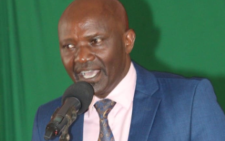Migration surge triples Kenya’s funding needs to Sh10 billion

A surge in migration needs has tripled funding requirements for Kenya from Sh3 billion in 2024 to an estimated Sh10 billion in 2025.
Globally, the United Nations (UN) estimates that the world will require over Sh1 trillion to address migration crises affecting about 100 million people.
For Kenya, the UN said that its geographical location and thriving economy compared to neighbouring countries make it a favourable destination for irregular migrants to settle or transit to other countries.
Consequently, Kenya also hosts a significant number of refugees and asylum seekers totalling over 880,000 from countries experiencing conflicts including South Sudan, Ethiopia and Somalia.
In 2023, a global risk index ranked Kenya as the 17th most at-risk country in the world, susceptible to multiple severe crises and hazards which include recurrent drought and floods, pandemics and epidemics, and inter-ethnic conflict which fuels migration and displacement of its citizens.
This year, the migration funding deficit soared following the occurrence of several natural calamities including the Mpox outbreak, the effects of the worst drought in 40 years following five consecutive failed rainy seasons and the above-average rainfall between March and May that caused devastating floods.
Following the drought an estimated 6.4 million people were affected where 4.5 million needed food assistance while about 2.4 million livestock died thus increasing the vulnerability of the pastoralist communities living in arid and semi-arid lands.
After the May heavy rains, 300,000 people were displaced and 250,000 learners were out of school due to the floods that destroyed crops, killed livestock and swept infrastructure limiting delivery of essential services to the victims.
“As of July 2024, Kenya faces a displaced population of more than 330,000 individuals due to both the pre-flood drought and the recent floods (DTM Kenya, forthcoming). These ongoing climatic swings are compounding existing vulnerabilities and exacerbating the humanitarian crisis in the country,” IOM-Kenya said.
Vulnerabilities
The migration agency emphasized that the increasing human mobility in Kenya poses a myriad of vulnerabilities such as increased mental and physical health risks, greater exposure to exploitation and abuse from exploiters including traffickers, and deteriorating living conditions for the affected communities.
“An analysis identified the most urgent sectoral needs of persons displaced due to climatic shocks or resource-based conflict to be health (71% of sub-locations), food (84% of sub-locations); water (in 82% of sub-locations); and shelter (in 74% of sub-locations),” IOM’s 2022 Displacement Tracking Matrix showed.
It adds: “Additionally, migrants encounter stressors that can lead to mental health issues due to the hardships they face during their journeys, including violence, loss of loved ones, and uncertainty about their future. Mental health and psychosocial support are critical to address their emotional well-being,”.
IOM warned that conflicts and natural hazards in Kenya and the wider region are expected to continue causing displacement and humanitarian needs which will exert additional strain on already vulnerable communities especially those living in the arid areas.
Impact on communities
“Inflation also impacts communities that are already recovering from the devastating impact of hazards, food insecurity, and high unemployment rates, especially among the youth,” the agency said.
The approximations in the 2025 Global Appeal published by the International Organisation for Migration (IOM) were distributed in three broad funding blocks.
From the Sh1 trillion, Sh400 billion will be required to fund the first objective which is to save lives and protect migrants, Sh388 billion to drive solutions to displacement as the second objective while Sh194 billion is needed to facilitate pathways for regular migration which is the third UN’s objective.
United Nations (UN) data showed that as of December 12 this year, the country needed Sh6.7 billion targeting 610,000 people affected by migration crises.
“As we look ahead to 2025, the increasing convergence of conflicts, climate-related disasters and economic challenges are among the many factors that will compel millions of people to move – in search of safety or simply opportunity,” IOM Director General Amy Pope said.
IOM said that geopolitical factors such as increasing and protracted conflicts among countries have resulted in unprecedented displacement and suffering for millions of people.
Additionally, economic inequality and environmental changes, including climate change, are also having extensive impacts on migration.
“At least 281 million people globally – approximately 3.6 per cent of the world’s population – live in a country other than their country of birth. The vast majority of international migrants are migrant workers; it is estimated that there are 169 million international migrant workers globally, 48.1 per cent of whom are women,” IOM stated.
UN reported that displacement is the largest crisis where the number of internally displaced persons (IDPs) globally has grown by a staggering 50 per cent.
“Moreover, displacement is increasingly protracted. In 2023, at least 50 countries reported that internal displacement within their borders had lasted more than 10 years. At the end of the same year, an estimated 75.9 million people across 116 countries were living in internal displacement, the highest figure on record,” the migration agency said in the report.
As per the IOM’s funds appeal for 2025, the East, Horn and Southern Africa, and Middle East and North Africa regions have the highest need for migration funding, at USD 1.7 billion.
Other regions—Europe and Central Asia- require USD1.4 billion, followed by Asia and the Pacific with USD1.3 billion, the Americas and the Caribbean need USD 1.2 billion, and the West and Central Africa region has the lowest migration funding need of USD 739 million.









